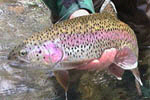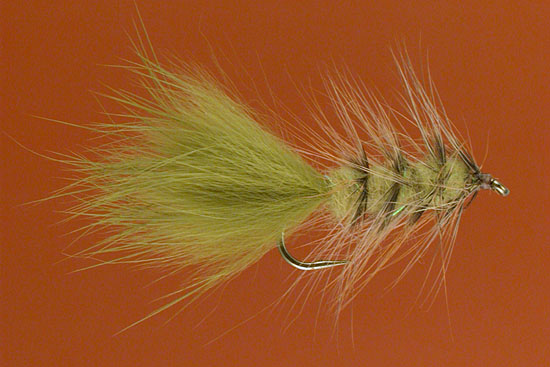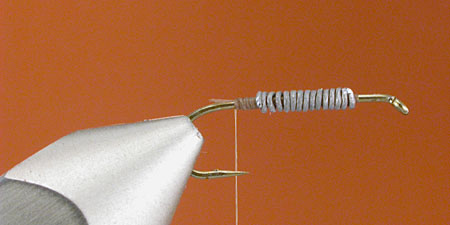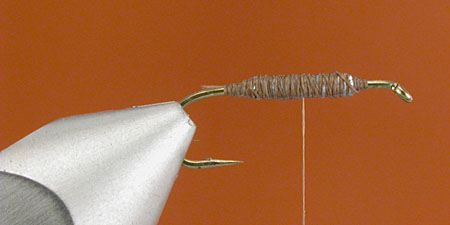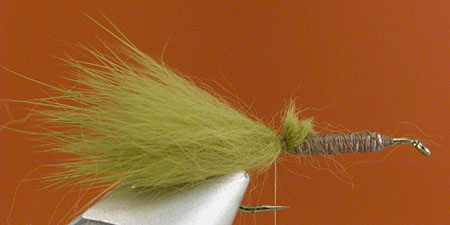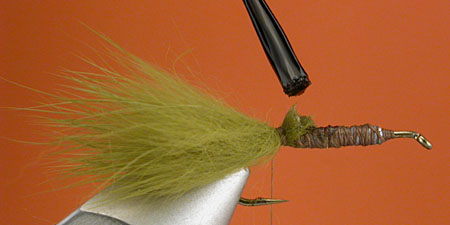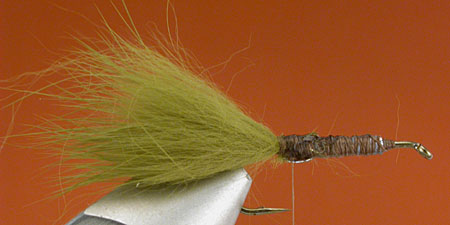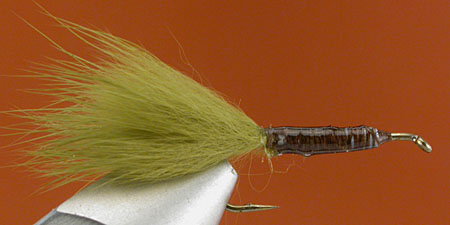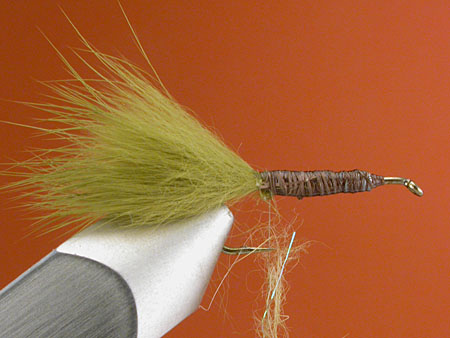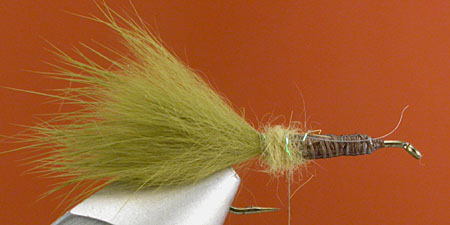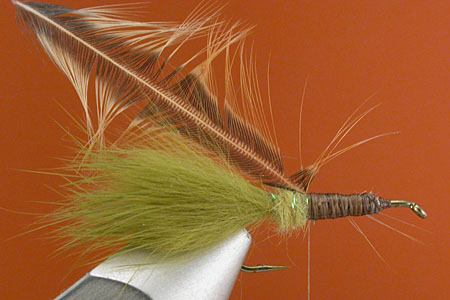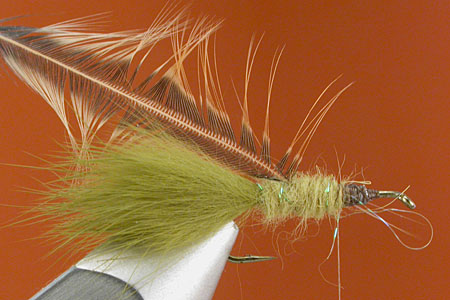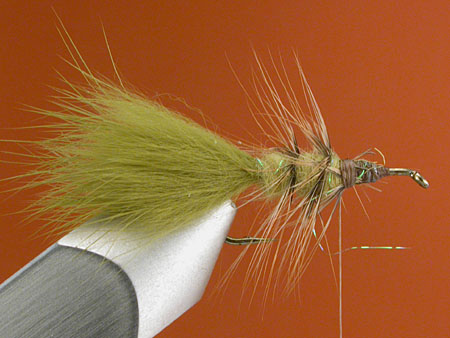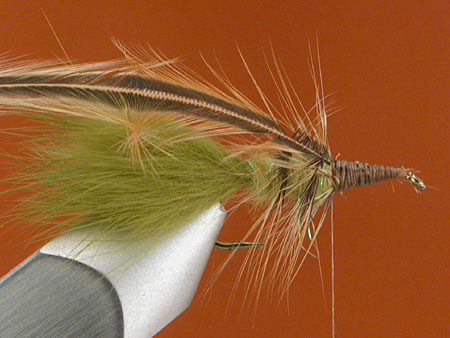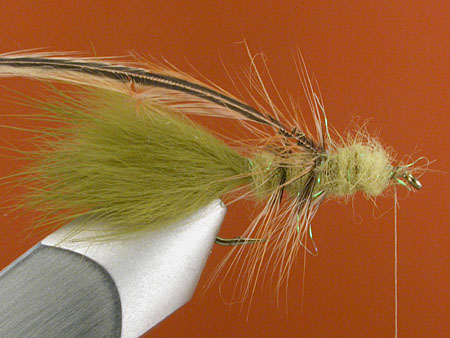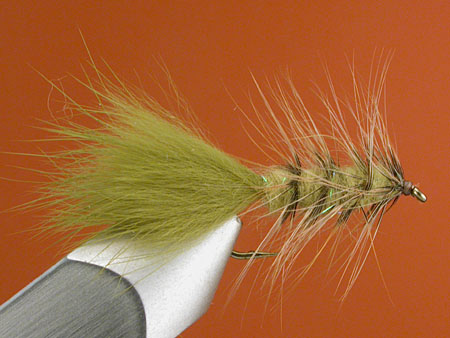|
Woolly Fur-Bugger
Step-by-step Instructions: Step 1: Prepare the hook by pinching down the barb, wrapping the shank with thick thread and adding 8-12 wraps of lead wire. I use wire that is about the diameter of the hook shank.
Step 2: Form a cigar-like underbody by completely covering the lead wire with wraps of thread. Taper the body at both ends of the lead wire. Thick thread covers the lead wire quickly and will help cinch down the rabbit fur tail.
Step 3: Tie in a bunch of rabbit fur with just a few turns of thread. The tail should be about as long as the hook shank. Shown here is fur removed from about 1” of an olive Zonker strip. (You will notice that to create a bugger-length tail you will need to work with a short tie-in area.)
Step 4: Add a touch of head cement or nail polish to the rabbit fur butts.
Step 5: Tie down the butts tightly. This will squeeze the head cement into the fur and swirl it around the shaft, creating a secure bond.
Step 6: Use a whip knot tool to place a whip knot at the back of the body, right over the cemented area and cut off the thread. Coat the entire thread-covered body with a layer of nail polish. This will help keep the lead from discoloring the dubbing after it becomes wet from fishing.
Step 7: Re-start using thread #2 and dub about 1” of thread.
Step 8: Create a few wraps of dubbing.
Step 9: Tie in the first hen neck feather, by the tip.
Step 9: Dub the body to approximately mid-shank.
Step 10: Palmer the hackle forward to mid-shank, making two complete wraps. I stroke the barbs toward the rear, using my left hand, as I palmer forward. Tie off and trim.
Step 11: Tie in the second hackle.
Step 12: Dub the front half of the shank
Step 13: Palmer the second hackle forward, making three complete wraps. You will now have made a total of five wraps of hackle from back to front. In the photo, there appear to be only four wraps because the fourth and fifth wraps are side-by-side in front of the dubbing, to create a subtle collar.
|
|
copyright © Notice by fishingwithflies.com. All rights reserved. This material is for your personal enjoyment. Please obtain prior written permission from the author and fishingwithflies.com before any other use. |
